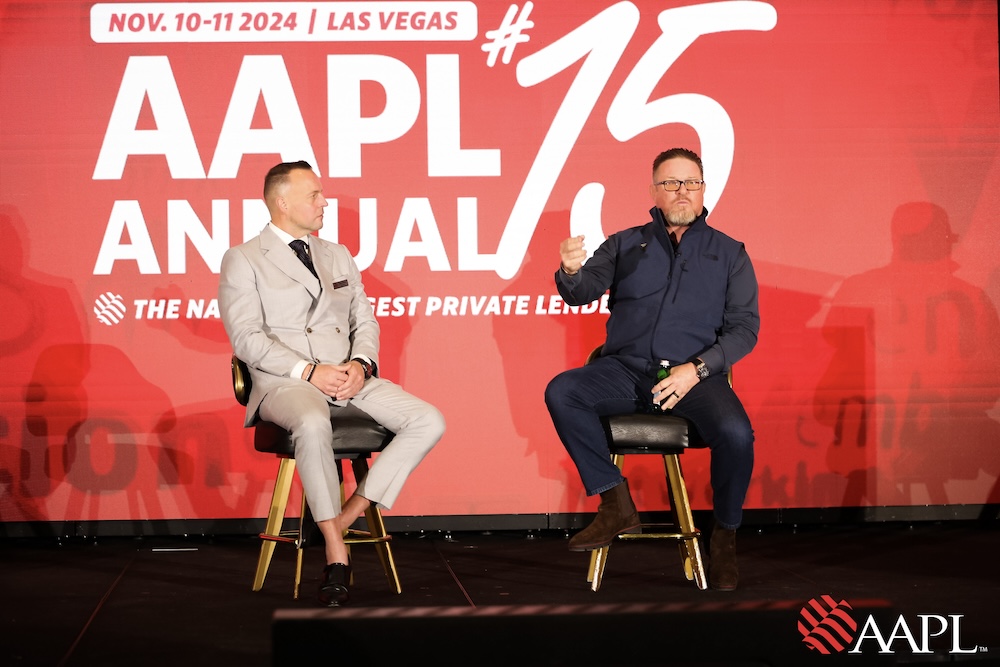Solve this one thing, and you’ll mint customers for life.
My experience working with private lenders goes back to my second deal, which was more than 20 years ago in 2001. The truth of the matter is, like many new investors, I was too scared of borrowed money to do my first deal, so I dipped into my retirement account and did the deal I could do with the cash I had.
My primary goal at the time was to build a portfolio of rental houses, so shifting from one retirement vehicle to another made sense, and I really didn’t want to take on more debt. That worked out well for one deal, but I quickly hit the wall when I ran out of cash. More important, 9/11 happened during the middle of my second deal, and my primary source of income evaporated seemingly overnight.
My plans changed, and so did the way I approached private lenders.
Change in Approach
Immediately following 9/11, I started wholesaling properties. Using private lenders became a big part of my success in wholesaling two or three deals a month. Having a lender who was ready to lend to me, or to one of my buyers, made the process of wholesaling seamless.
This approach worked well for nine months. Then one of my end-user buyers backed out of the deal, stating that the private lender would not lend to her. The statement sounded odd to me, because I knew the lender would lend to anyone, as long as the underlying transaction (deal) was good and met his criteria.
With the buyer’s permission, I called the private lender and asked why he was turning out this particular deal. He immediately shared with me that there was nothing wrong with the deal, but his rule was that he would not lend to a borrower without getting their spouse’s signature on the paperwork if they were married.
Despite putting on all the charm, my private lender stopped me dead in my tracks when he asked me, “Sherman, if her husband doesn’t trust her with the deal, why should I?”
Then he said the words that changed my life, “Sherman, this is a great deal you put together. Why don’t you do it? If your wife will sign the paperwork with you, I’ll loan you the money!”
That’s when I truly understood the power of private lenders for doing rehabbing as well as wholesaling. With that one deal, my game plan changed overnight. I was sold on rehabbing, with the first $43,000 profit check to cap off my first year as a full-time real estate investor.
Growth—and More Change
This business model of buying, fixing, and flipping single-family houses using private lenders served me well for my first few years in the business. But as I outgrew private lenders, the plan began to change.
Two decades ago, most private lenders were hyperlocal. Many did not even lend on the other side of town. To the best of my knowledge, there were only two “national rehab lenders” back in 2003, and they did not lend in every state. However, they did offer better rates and terms than my local private lenders.
The Great Recession brought many changes in the private lending environment for borrowers like me. First, there was an almost total lack of organized capital and private lenders. We had to become good at raising private capital. We did this mainly through private lenders, meaning people who knew little to nothing about real estate but looked to borrowers for their expertise in navigating the rehab (fix-and-flip) waters.
One other change occurred in addition to borrowers learning how to become more creative in raising capital. Wall Street fully embraced single-family homes. An explosion of Wall Street-backed funds occurred. These funds looked to actually buy/hold for 3-5 years and buy fix-and-flip single-family homes coming out of the recession. But, after two or three years that looked as if Wall Street would replace the local rehabbers/borrowers, Wall Street suddenly changed its strategy and decided the better path forward was to make capital available to intermediaries versus actually holding single-family assets.
This change by Wall Street set up the current lending environment. First, Wall Street’s participation acknowledged that single-family assets are a viable place to direct capital. Second, nationwide standards have been set for accessing Wall Street capital for single-family assets and, ultimately, making capital available nationwide for single-family assets.
Many private lenders have for years known how to tap local sources of capital, such as lines of credit from local lenders and high net-worth individuals through private placement syndications. This influx of Wall Street capital into the private lending landscape has benefitted both private lenders and borrowers and, of course, Wall Street lenders.
A Change That Still Needs to Happen
Although there is probably more capital than ever available for private lenders and borrowers, one thing that surprisingly has not changed during the past 20 years is private lenders are still very much “capital focused” and not “customer focused.”
Most relationships between private lenders and their borrowers are measured in terms of months, unlike other industries where relationships with customers are measured in years and decades. “One and done” was very much the order of the day when I was an active wholesaler and rehabber 20 years ago. And the same seems to be true today.
Why?
Because most private lenders are focused on the deal and getting returns for their stakeholders. They are less concerned about building long-term relationships with borrowers (their clients), which involves providing borrowers with the tools needed to meet the borrower’s goals.
Most clients are not interested in “one and done.” Most are interested in building wealth. Building wealth requires two key things: (1) becoming more efficient (more profitable) as a rehabber, and (2) buying and holding assets that contribute to long-term wealth. Both client-centric goals are at odds with what most private lenders are capable of doing (or willing to do) over time for their clients.
Many clients walk away from the relationship with their (initial) private lender when they realize they can obtain capital at a lower cost as their skills improve as rehabbers. Many private lenders have recognized this and have created programs that acknowledge better rates for more deals done.
Still, when it comes to helping clients build long-term wealth by providing capital that can easily convert to meet the needs of clients who want to buy/fix and hold, the industry continues to operate like it did prior to the Great Recession.
Recently, I helped my 19-year-old son obtain his first single-family house as a buy/fix/hold transaction. It was a 30-year-old three-bedroom split level that needed about $30,000 in repairs and to be converted to four bedrooms. With those modifications, the house could easily rent for $3,500 a month, yielding a net monthly cash flow of $1,200.
We diligently researched local and national private lenders who could fund the deal, knowing that it was going to be a buy/fix/hold, not a buy/fix/flip. We did our diligence and received (written) commitments to fund the deal as a buy/fix/hold. Still, the private lender came through like a charm in the initial acquisition and “rehab” funding but failed miserably when it came time to convert the deal into a 30-year investor loan.
Suddenly, in spite of the fact we were able to complete the rehab in just four weeks and that we had a Section 8 tenant lined up and ready to go in eight weeks, the deal became a problem. Now we had to “wait for two or three more months” and start the loan application process all over again “Please do not sign the lease, just submit it for underwriting” became the new marching orders.
Frankly, I appreciated all the private lenders who told us up front they would not fund a deal if the exit strategy was to rent it. At least they saved everyone time and grief by being honest.
In the end, we sold the property and made an $87,000 profit. I can’t complain about making the profit. And I can’t complain about the speed at which this private lender funded the deal and acted on the draw requests. However, I believe private lenders who choose to be client-centered and provide seamless buy/fix/hold capital will have borrowers lining up around the block to do business with them.











Leave A Comment